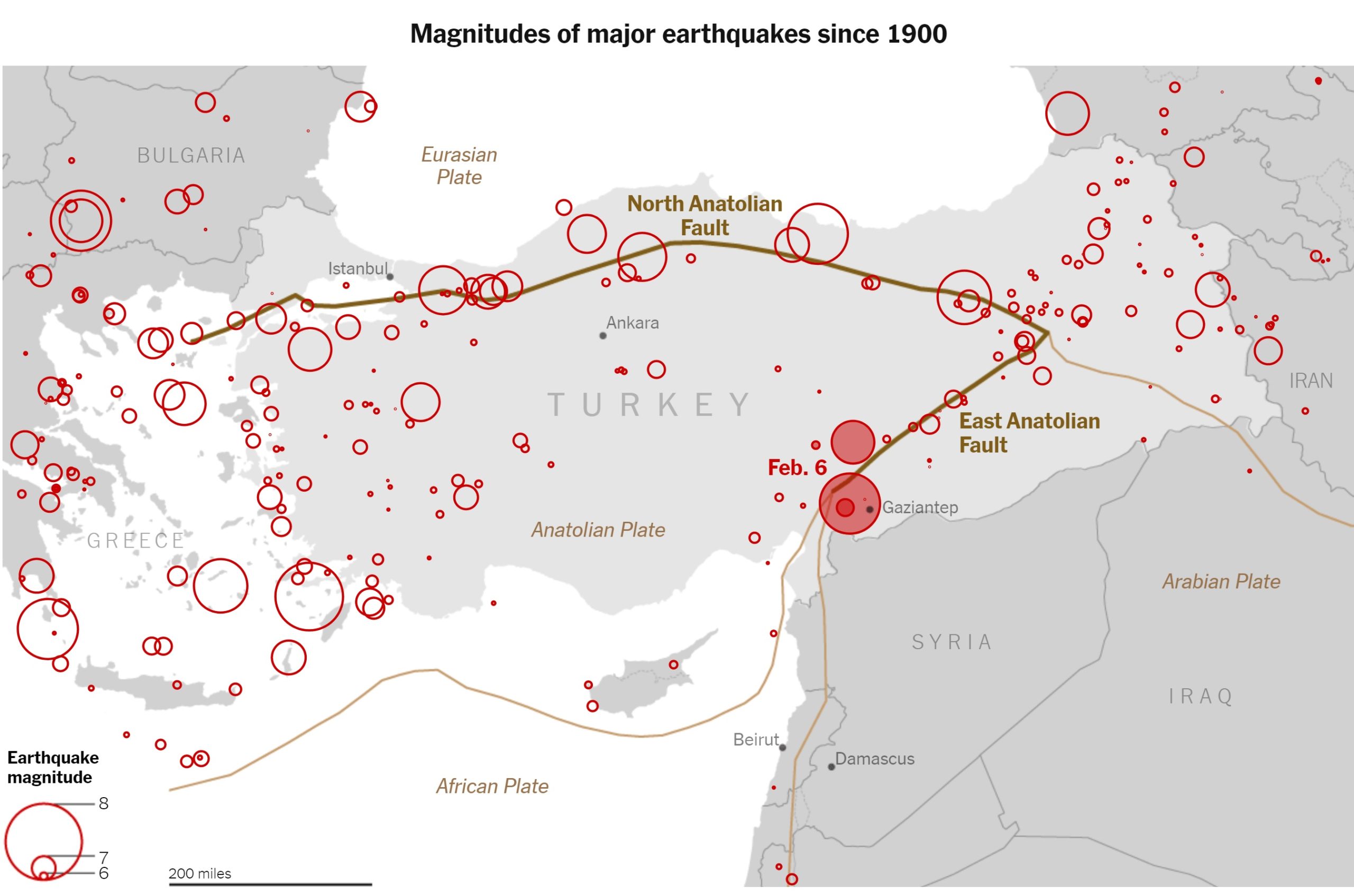The widespread devastation and loss of life of Monday’s earthquake in Turkey is shocking to me. The map below shows where the North Anatolian Fault line and the East Anatolian fault line runs in Turkey.
It was the East Anatolian fault that ruptured— well-known to seismologists and government officials. The problem was that it had not caused a catastrophic earthquake in at least the last century. So building codes had not been enforced rigorously enough in many areas near the fault line.

The major earthquake and large aftershock in Turkey on Monday are two of more than 70 quakes of magnitude 6.5 or higher recorded in the region since 1900. Turkey’s two main fault zones — the East Anatolian and the North Anatolian — make it one of the most seismically active regions in the world.
The 7.8-magnitude earthquake at 4:17 a.m. local time, and the unusually large 7.5-magnitude aftershock nine hours later, both were in the East Anatolian Fault Zone. But there have been several extremely deadly quakes in the North Anatolian Fault Zones as well, including one in 1999 about 60 miles from Istanbul that killed about 17,000 people.
